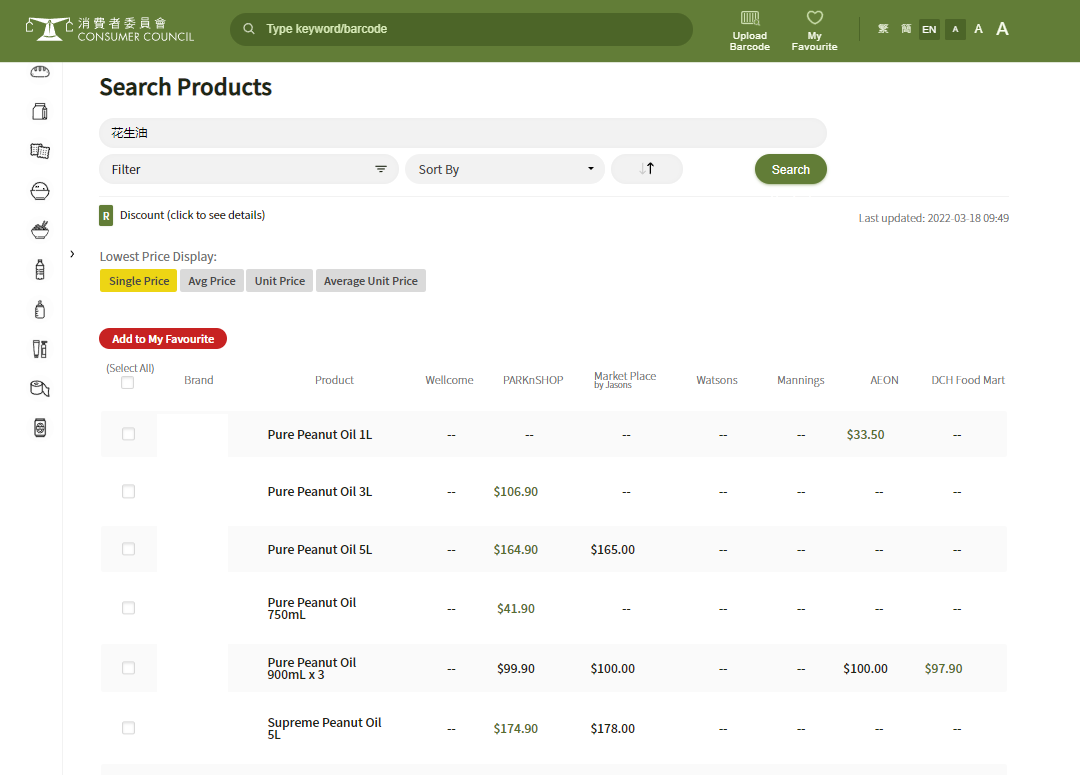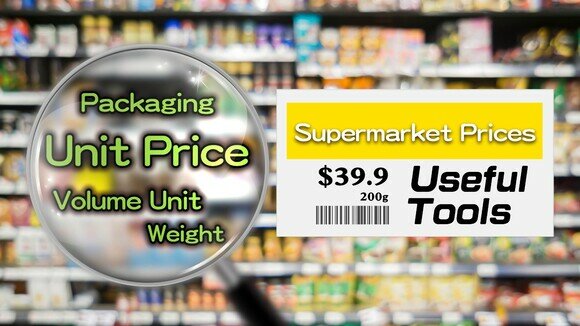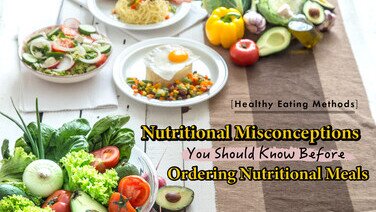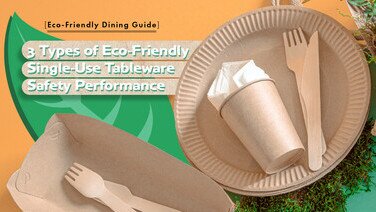What is “unit price”?
Consumers sometimes wonder which packaging may represent better value – 500ml or 1kg. Some may make comparison by calculating the average price per 100ml or per 100g. This is the “unit price”, i.e., price per standard unit of a product.
.jpg)
In some overseas countries or regions (e.g., Australia, some states in the United States, and Quebec, Canada), retailers are required to show, in addition to the selling price, the price per unit of weight, capacity or size (e.g., per 100g or 100ml), so that consumers can make meaningful comparison across products of different sizes and brands.
5 smart supermarket shopping tips
From the information gathered from our previous survey, we have complied a list of 5 shopping tips for you!
1. Larger package may not mean cheaper in price
Although the unit prices of products in larger packages (based on total net weight / volume) are generally lower than those in smaller packages, this is not always the case. This survey found many examples where the same brands or products that were being sold in the same supermarket had lower unit prices in smaller-size packaging. In some of these examples, the unit prices could vary by as much as 42.2%!
For example, the unit price of a condensed milk was $7.31 in a 450g squeeze bottle in two supermarkets, whereas the unit price of a 185g tube pack in the same supermarkets was lower at $5.35 and $5.14, representing a difference of 36.6% and 42.2%, respectively.
In addition, the unit price of a peanut butter in a 510g bigger pack was $7.63 and $7.24 in 3 supermarkets, which was 4%, 4.9% and 19.9% higher than that of a 462g medium pack ($7.34, $6.9 and $6.04)
2. What about the price of the same product with the same weight but of different flavours?
Have you ever experienced undecisive moments when facing products (such as canned soup or breakfast cereals) that come in different flavours but were selling at the same price and ending up choosing randomly as you didn’t have a particular preference? Actually, these products may differ in net weight and hence the actual unit price may vary greatly. The survey found in some supermarkets that certain products in similar packaging but with different flavours might have this issue.
Take instant oatmeal as an example, the “original” and “maple and brown sugar” flavours were both priced at $33.9 in 2 supermarkets, but the net weight of the former was 224g (unit price: $15.13), while that of the latter was 328g (unit price: $10.34), representing a difference of 46.3%.
Another example was spaghetti sauce. In the same supermarket, 4 types of spaghetti sauce of the same brand and same series, but of different flavours were all selling at $29.9, but the net weight of the products ranged from 75.3g (pepperoncino) to 135g (tomato cream). The unit prices were $22.15 and $39.71, respectively. representing a difference of 79.3%.
3. Products from the same brand may have different capacity unit
During the survey, the Council also found in some supermarkets that products in different packaging might have different weight/volume units. For example, consumers might find evaporated milk in a 450ml carton or in a 170g can, which could be confusing and making comparison per unit price difficult by simple calculation.
In addition, different supermarkets might use different weight units when selling fresh produce. Although the unit price was generally provided on the packaging, the weight units used were different, such as fresh fish was in catties, while meat and fruits were in lb or kg or per 100g.
Even in the same supermarket, the unit of measurement and unit price of fresh vegetables could be different if they were being sold “pre-packaged” in standard size, or simply “by weight”. For example, one of the supermarkets was selling Chinese cabbages at $59.9 per kg (unit price: $5.99), while the pre-packaged ones (300g per pack) were selling at $12 per 2 packs (unit price: $2). You can see that the unit prices of Chinese cabbages could vary greatly if they were sold differently.
Therefore, apart from asking consumers to be thorough in price comparison, the Council also urges supermarkets to standardise the measurement units for products that may have 2 or more types of net weight / volume units displayed on their packaging. Also, relevant conversion information should also be provided at fresh produce sections to facilitate easier and more accurate price comparison for consumers.
4. Products in handy packaging are cheaper in price?
The convenience of handy packaging does come with a price, e.g., the unit price may be higher. For example, the unit price of a ketchup in a 20oz squeezable bottle ranged from $3.79 to $4.04 in 3 different supermarkets, whereas the product in a 320g bag pack was selling between $2.97 and $3.09, representing a difference of 22.7% to 36%. When compared to the unit price of the same product selling in another supermarket but in a 300g bottle ($2.97 – $3.30), the difference was between 14.8% and 36%
5. Do we still need to check the price physically at each supermarket?
Are you getting a headache at calculating the unit price? Don’t be despaired as consumers can now make good use of the Council’s "Online Price Watch" tool (https://online-price-watch.consumer.org.hk/opw/). It contains information regarding the unit prices of various products in different supermarkets and grocery stores. Consumers have never felt easier in comparing the “real” prices of different goods.

To read the detailed report regarding the survey on supermarket prices, please refer to the article “How to Compare Prices in Supermarkets? Calling for a Unified Unit Price to Help the Public Shop Wisely”, CHOICE Magazine, Issue 533.(Chinese version only).
Extended reading: Beware of fake discounts in supermarkets
Enticed by the big price gap between the discounted price and the original price? Be careful this may just be another misleading sales tactic! In order not to become a “dupe”, you may want to read the article, “Trivia Facts on Supermarket Prices: Does Strike–through Price Indicate a Real Discount?”







![[Baby Snacks Guide] Who Says Snacks Can’t Be Healthy?](/f/guide_detail/415742/376c212/bb%20snack.jpg)



